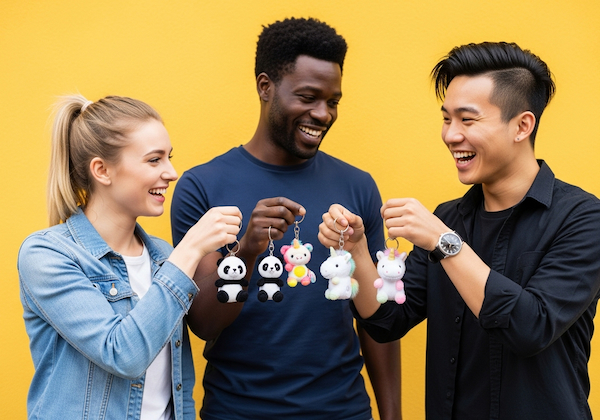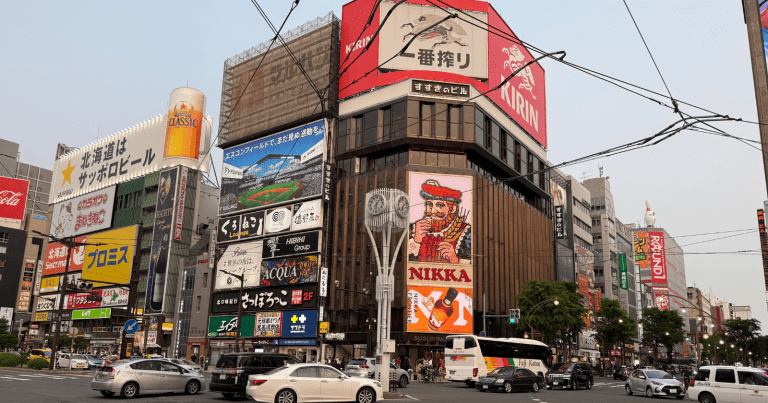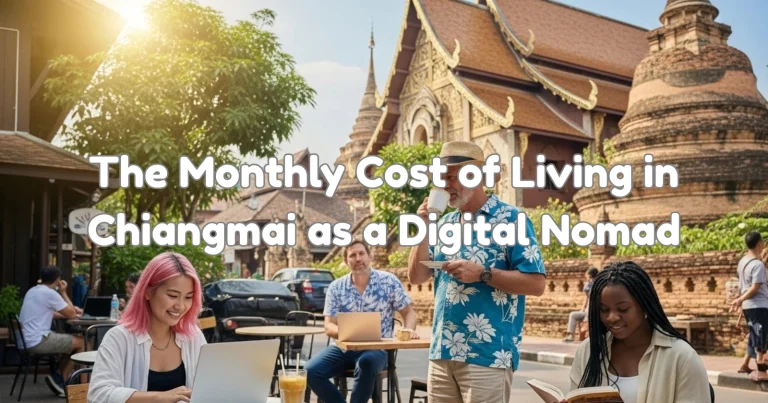
As someone firmly in my thirties, I’d like to think I have a decent grasp on what’s “in.” My apartment is tastefully decorated, my Spotify playlists are reasonably current, and I can hold my own in a conversation about the latest streaming hit. I even have a small, curated collection of stuffed toys from my travels—a soft, floppy-eared rabbit from Singapore, a cheerful, round bear from Tokyo—souvenirs that sit quietly on my bookshelf. They are cute, comforting, and entirely uncomplicated. Which is why, I must confess, I don’t quite get the Labubu phenomenon.
Everywhere I look, online and off, is this buck-toothed, elfin creature with a mischievous glint in its eyes. It’s on phone cases in the hands of commuters, dangling from the designer bags of fashion influencers, and fueling a frantic, worldwide treasure hunt in the form of “blind boxes.” This is the Labubu effect: the inexplicable, explosive rise of an “ugly-cute” toy that has somehow conquered the globe. I look from my simple, cuddly rabbit to the seemingly chaotic energy of Labubu and I have to ask the question: Why? What is it about this particular vinyl figure that has captivated millions, from young children to grown adults, and turned them into fervent collectors overnight? I decided it was time to find out.
The Genesis of an Impish Icon
To understand ‘The Labubu Effect’, we must first journey to its creative wellspring: the fertile imagination of Kasing Lung. Hailing from Hong Kong, Lung is an illustrator and character designer whose distinctive style blends childlike innocence with a touch of playful mischief. His characters, often described as fantastical creatures with a slightly unsettling yet undeniably endearing charm, first emerged from his art books and illustrations. Labubu, with its prominent front teeth, mischievous grin, and pointy ears, is perhaps the most iconic of these “Zimomo” monster series.
The concept of “ugly-cute,” or kawaii kowai in Japanese (a related aesthetic, though Labubu has its distinct flavor), is not entirely new to Asian culture. It plays on the juxtaposition of traditionally unappealing features with an overall sense of charm and cuteness. Think of some of the more grotesque, yet beloved, characters in Japanese folklore or even certain animated figures. This aesthetic challenges the conventional, inviting us to find beauty in imperfection and relatability in the slightly odd. Labubu perfectly embodies this paradox, appealing to an audience weary of overly saccharine or perfectly polished characters. It’s a subtle nod to the complexities of real life, where beauty often emerges from unexpected places.
Before its global explosion, Labubu existed primarily within the niche world of designer toys and art collectibles, a vibrant subculture that had been steadily growing, particularly in East Asian cities like Hong Kong, Japan, and parts of mainland China. These aren’t your mass-produced children’s playthings; they are limited-edition, often hand-painted, and highly sought-after artistic creations. This initial positioning as an art object, rather than a mere toy, lent Labubu an inherent sense of exclusivity and value from the outset. Collectors appreciated the craftsmanship, the artist’s unique vision, and the narrative woven into each character. This foundational respect for the art itself laid crucial groundwork for what was to become a mainstream phenomenon.
The Rise of the “Kid-dult” and the Allure of the Blind Box

Labubu’s ascent from niche art collectible to global sensation cannot be fully grasped without understanding two powerful cultural currents: the rise of the “kid-dult” consumer and the intoxicating appeal of the blind box.
The “kid-dult” phenomenon refers to adults, typically millennials and Gen Z, who engage in activities or consume products traditionally associated with childhood. This isn’t about immaturity; it’s about nostalgia, stress relief, self-expression, and finding joy in playful pursuits in an increasingly demanding world.
As a solo traveler navigating the often-intense pace of modern Asian life, I’ve observed firsthand how individuals seek solace and simple pleasures, and these toys offer just that. In a world fraught with responsibilities, collecting an “ugly-cute” character like Labubu offers a whimsical escape, a moment of unadulterated fun that transports one back to a simpler time, or perhaps offers a tangible representation of their inner child.
“We don’t stop playing because we grow old; we grow old because we stop playing.”
This sentiment perfectly encapsulates the “kid-dult” mindset. These aren’t mere toys; they are tangible expressions of a desire to maintain a connection to playfulness and creativity. Adults, with their disposable income, are not just buying a piece of plastic; they are investing in a piece of art, a hobby, a community, and perhaps, a small slice of happiness.
Crucially, the blind box marketing strategy was the rocket fuel for Labubu’s popularity. A blind box contains a collectible toy from a series, but the specific character inside is unknown until the buyer opens it. This creates an element of surprise, a thrill of the chase that taps directly into human psychology. The concept isn’t new – it has parallels with trading cards, gashapon in Japan, or even claw machines, but its mainstream adoption and sophisticated execution by companies like Pop Mart, which collaborates with artists like Kasing Lung, have been revolutionary. Pop Mart, a Chinese toy company, expertly leveraged this model, transforming the act of purchasing a collectible into an addictive game.
The appeal of the blind box is multifaceted. Firstly, there’s the dopamine hit of anticipation and discovery. Each unboxing is an event, a small gamble that could yield a highly sought-after “secret” or “chase” figure, which are produced in extremely limited quantities. Secondly, it fosters a strong sense of community. Collectors connect online and offline to trade duplicates, share their finds, and complete their sets. This communal aspect, the shared excitement and pursuit, amplifies the individual joy of collecting. Thirdly, it drives repeat purchases. To collect an entire series, one must buy multiple blind boxes, fueling a continuous cycle of engagement. This strategic brilliance transformed Labubu from a beloved character into a cultural phenomenon that spurred intense collecting frenzies. According to reports on the blind box market, it has become a multi-billion dollar industry, showcasing the immense power of this consumer model.
Beyond a Mere Toy

Is Labubu “just a toy”? From the perspective of a casual observer, perhaps. But for millions of collectors and enthusiasts, it is so much more. It embodies elements of modern art, a valuable collectible, and a subtle commentary on contemporary life. The limited editions, collaborative projects with other brands, and the artist’s continued involvement elevate Labubu beyond typical playthings. Each figure is meticulously designed, often with intricate details and accessories, making them miniature sculptures rather than simple plastic figures.
The “ugly-cute” aesthetic of Labubu also serves as a form of cultural rebellion against conventional beauty standards. In many parts of Asia, there has long been a strong emphasis on traditional beauty, often characterized by delicate features and flawless appearance. Labubu, with its slightly menacing yet endearing look, offers an alternative, celebrating quirkiness and imperfect charm. This resonates deeply with a generation that values authenticity and individuality over polished perfection. It’s a reflection of a broader societal shift towards embracing diversity in aesthetics, a concept I’ve seen manifest in various forms across the region, from the quirky cafes in Penang to the unique street art in Bangkok.
The hype surrounding Labubu and the blind box consumerism, while exciting, also invites reflection on modern consumption patterns. The pursuit of rare figures can sometimes lead to excessive spending or even speculation, as “secret” figures can fetch high prices on the secondary market. This mirrors broader trends of collector culture and the psychological pull of scarcity. Yet, for many, it remains a healthy hobby, a source of joy, and a way to connect with others who share a similar passion. It’s an example of how consumerism isn’t always driven purely by necessity, but by emotional fulfillment, community, and the simple human joy of collecting. As Andy Warhol famously stated, “Pop Art is a way of liking things.” Labubu, in its essence, is a contemporary form of pop art, reflecting and shaping the likes of a generation.
The psychological underpinnings of collecting are profound. Psychologists often explain collecting as a means of organizing the world, finding meaning, and asserting control in an uncertain environment. It offers a sense of accomplishment upon completing a set and provides a tangible connection to a passion. In the context of the highly competitive and often stressful societies of East Asia, these seemingly innocent pastimes can offer a crucial outlet for emotional expression and stress reduction. It’s a fascinating element of modern culture shocks that often surprise first-time visitors, seeing highly driven individuals dedicate time and resources to these whimsical pursuits.
Contemporary Impact and Cultural Exchange

Today, Labubu’s impact stretches far beyond the realm of toys. It has become a symbol of contemporary Asian pop culture, influencing fashion, art, and even home decor. Its ubiquity, from collaborations with international brands to appearances in everyday life, underscores its status as a cultural icon. The “Labubu Effect” demonstrates how a well-conceived character, coupled with innovative marketing, can transcend geographical and cultural boundaries, fostering a shared global appreciation for a unique aesthetic.
For those of us observing or immersing ourselves in Asian cultures, understanding phenomena like Labubu offers valuable insights into the social fabric. It teaches us about the evolving tastes of the younger generation, their relationship with consumerism, and their avenues for creative expression and emotional release. It’s a reminder that culture is dynamic, constantly reshaping itself through new artistic forms and consumption habits. When we see queues forming for new blind box releases or collectors meticulously arranging their figures, we are witnessing a genuine passion that is as valid as any other hobby. This deep dive into such cultural nuances helps us build bridges of understanding, fostering genuine connections that go beyond surface-level observations. My own journeys through Southeast Asia have shown me that truly connecting with a place means understanding its people’s passions, however unconventional they may seem to an outsider. It’s about cultivating a love with their culture, in all its unique expressions.
The global reach of Labubu also speaks to the increasing interconnectedness of our world. What begins as a niche artistic expression in Hong Kong can, with the right combination of cultural resonance and strategic promotion, capture the hearts of collectors and enthusiasts across continents. This phenomenon is a testament to the power of design and the universal human desire for connection, novelty, and the occasional delightful surprise.
Conclusion: The Enduring Charm of the “Ugly-Cute”
The journey of Labubu highlights the ingenuity of Asian artists and entrepreneurs, the evolving tastes of a new generation, and the powerful psychological pull of collecting and surprise. ‘The Labubu Effect’ is more than just a passing fad; it’s a vibrant reflection of contemporary Asian culture, its embrace of unconventional aesthetics, and its sophisticated approach to consumer engagement. It reminds us that art and play know no bounds, finding expression in the most unexpected forms and captivating hearts worldwide.
As we continue to explore the diverse landscapes and traditions of Asia, understanding these modern cultural phenomena enriches our journey, allowing us to appreciate the intricate blend of heritage and innovation that defines this incredible continent. Embracing the “ugly-cute” is, in its own way, an embrace of a deeper, more nuanced understanding of beauty and joy in our interconnected world.







